How do heads-up displays work? Are they available for all cars!
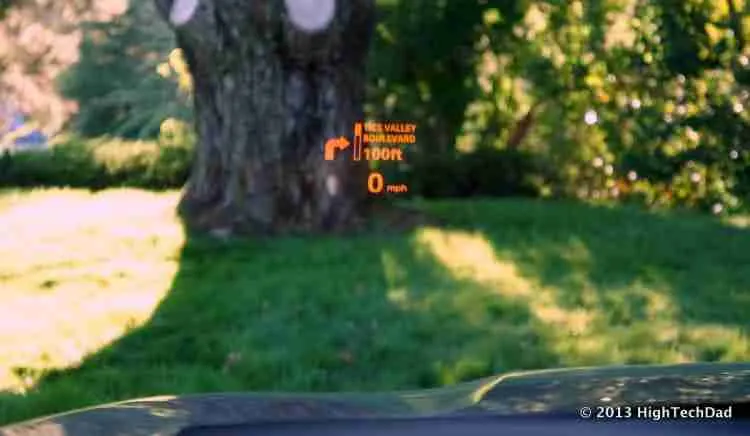
You might think its science fiction, but heads-up displays are here and are making driving easier and safer. Although head-up displays are not new and were originally used in fighter jets, they are becoming much more mainstream in cars for the average driver. With new distractions being added to cars everyday from cell phones and touch screen stereos, heads-up displays are being used to help make better drivers out of all of us.
What a heads-up display is.
If you have looked at new Audis, Mercedes, or some GMs you probably have already heard of a heads-up display thanks to a salesman trying to upsell a car package to you. A Heads-up display is a digital transparent image that is projected onto the windshield of a car, displaying the information you would get from the dash. Heads-up displays work by projecting a reversed image onto the windshield which is then reflected to the drivers eyeline. This helps keep focus where it should be, on the road ahead.
Heads-up displays have come a long way since they were first put into cars. GM put the first HUD system in a car, an Oldsmobile Cutlass Supreme Indy Pace Cars in 1988, but only displayed very minimal information. Corvette followed up putting HUD in their cars in the late 1990’s with more display options that included tire pressure, oil pressure and many others.
The Need for heads-up displays.
Accidents can happen in a split second, and heads-up displays try to minimize this by putting all the information you need directly in front of your eyes. If someone is using a GPS, they will occasionally take their eyes off the road to make sure they are still on the right path. Or if someone is travelling down the road without cruise control, they will look down at the dashboard to make sure that they are not speeding.
How a heads-up display works.
 Heads-up displays work by sending a picture of information from a light source called the picture generating unit to the fold mirror. The fold mirror flips the image and reduces the size of the image which is then reflected to the rotatable mirror. Without the fold mirror the image would be too big, upside down, and be pointing away from the windshield.
Heads-up displays work by sending a picture of information from a light source called the picture generating unit to the fold mirror. The fold mirror flips the image and reduces the size of the image which is then reflected to the rotatable mirror. Without the fold mirror the image would be too big, upside down, and be pointing away from the windshield.
The rotatable mirror has several jobs. It makes the image the correct size and fixes distortion from the curve of the windshield. Without the rotatable mirror the image would appear elongated and hard to read. With the push of a button the rotatable mirror allows to adapt for the driver’s height and position the image on the windshield to personal preference.
Before the image is displayed on the windshield it passes through the glare trap which makes sure that the sun is not reflected from the HUD to the driver’s eyes. The glare trap is at the top of the HUD and is a concave, rectangular piece of glass. Most HUDs project an image that is 5 to 10 inches.
Other types of HUDs.
Some manufacturers, such as Mazda, use a rectangular piece of plastic called a compiler to display the information instead of projecting onto the windshield. This piece of plastic can be adjusted and folded down when not in use. This requires less mirrors and components to the HUD system to make the information clear and legible regardless of the shape of the windshield.
What you can see.
A heads-up display, or HUD, beams a floating image of information, that would normally be found on the dash, into the driver’s line of sight. The idea is to limit time not paying attention to the road by giving the driver all the information they would need in their line of sight. HUDs that come pre-installed in a vehicle can pull any information about what’s happening in the engine in real time.
HUD can also display fuel usage, mileage, engine faults, engine speed, oil temperature and much more. This can make the HUD an ideal tool for road trips when fatigue from driving can make taking your eyes off the road for even a second much more dangerous. Newer HUDs even highlight street signs, and flash warnings for stopped cars and accidents ahead.
Some high-end HUD systems also come with a night vision display, which takes an image from behind the grill and displays the road in front of you in infra-red. This can come in exceptionally handy to avoid any animals that plan to dart in front of your car in the dark.
GPS a thing of the past?
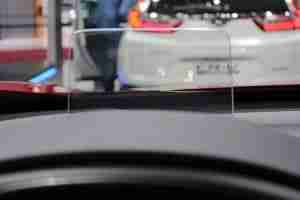 The most important information that is displayed is your speed, but that is only the tip of the iceberg of what a HUD can do. Step by Step navigation can be displayed in front of your eyes with arrows over your lane showing when to turn and what direction. This foolproof navigation system can make all other types of in car GPS systems obsolete. No more GPS yelling that you missed a turn 2 blocks back.
The most important information that is displayed is your speed, but that is only the tip of the iceberg of what a HUD can do. Step by Step navigation can be displayed in front of your eyes with arrows over your lane showing when to turn and what direction. This foolproof navigation system can make all other types of in car GPS systems obsolete. No more GPS yelling that you missed a turn 2 blocks back.
How a heads-up display can help you.
Along with giving your car a higher-end look, HUDs also provide a unique safety feature. While HD information screens and infotainment systems look nice and can provide a wealth of information, you must take your eyes off the road to look at them. With a heads-up display all the information you need is right at eye level allowing you to keep your full attention on the road.
In town driving.
HUDs can come in very useful driving in a town or city. Being able to see a pedestrian in a crosswalk while you are checking your speed, or a car stopped at a red light while looking at your gas gauge will help keep yourself and others safe.
Safety at high speeds.
On the highway, looking at your dashboard means taking your eyes off the road for surprisingly long distances due to the speed that you are traveling. Using a HUD can be key for safety on the highway with speeding traffic switching lanes in front of you.
Some HUDs can even tell you how fast the vehicle in front of you is traveling to save you from costly, and hazardous accidents. Some experts expect HUDs to become a legal requirement in new cars to battle distracted driving and help avoid accidents.
Factory installed HUDs.
If you are in the market for a new car you might have noticed a heads-up display included in a variety of the vehicle packages. This is a little more expensive than an aftermarket HUD system, but it does have its advantages.
If you have the option for a pre-installed heads-up display it is definitely worth the money, as it is usually only a couple hundred dollars more and comes with other upgrades. It also gives you the most options to display since the HUD is wired to the car’s engine. Factory installed HUDs can easily be hooked up to Bluetooth and manage your entertainment system right from the HUD itself. This can help avoid distractions by having all txt, call, and email notifications show up directly on the HUD.
HUDs for all cars!
Don’t be discouraged, if you think your car is too old or basic to have a luxury item like a heads-up display, you’re wrong! Any car can be updated with a HUD which will not only update the look of a car but also improve the safety, drivability, and overall experience.
An aftermarket HUD can be purchased from many retailers both in store and online. Some of the retailers you can purchase a HUD from are Walmart, Amazon, Home Depot, and most auto parts stores. These HUDs range in price from as little as $9 and up.
Aftermarket HUDs.
Aftermarket HUDs use a small rectangular device the size of a smart phone to project the information onto the windshield. These HUDs are plugged into a cars OBD2 port which is found on the driver’s side, under the dash.
Because these HUDs are plugged into the car itself, they will not work with all years and models of cars. The OBD2 port is a direct link to the car, and it is the same port that a diagnostics computer would be plugged into. OBD2 connectors were required on cars sold in the U.S. starting in 1996.
What an aftermarket HUD will display.
Aftermarket HUDs can come in as simplistic or sophisticated as you would like. Some of the older or more simplistic models are going to focus just on speed and miles. Whereas some of the HUDs will go beyond the basics and give you temperature gauges, navigation, and even have motion gesture cameras built in.
Heads-up display apps.
 If you have an older car that does not have an OBD2 port fear not, a HUD app might be the way to go. HUD apps are free on app stores and the display device that can be used with them is cheap.
If you have an older car that does not have an OBD2 port fear not, a HUD app might be the way to go. HUD apps are free on app stores and the display device that can be used with them is cheap.
Many of the cheaper HUD devices do not actually project an image on to the windshield. Instead they use their own clear screen, called a compiler, that displays the information using a HUD app on your smartphone while sitting on your dashboard at eye level.
Although these HUDs don’t display as much information, they still provide the same safety by allowing a driver to stay focused on the road by displaying all the information that you would need. An added safety bonus is that it keeps smartphones out of the hands of distracted drivers.
The smartphone HUD works for any make, model, or year and is a good way to find out if you like it before opting for more expensive options. There are many different apps to choose from that will give you different options of what is displayed. And if you are really on a budget you can forgo the HUD display device and simply use the phone and app to reflect off your windshield for free, although this really only works at night.
What HUD apps will display.
Many of the different HUD apps for your smart phone will display different information giving the user the power to choose what they would like displayed. Google maps has a HUD app that focuses on navigation. Other apps are more simplistic and strictly focus on your speed and miles. There are even apps that monitor how much turning and braking to show how economical a person is driving.
Though the app is the cheapest option the speedometer display relies on your phone GPS. This can be unreliable at giving the correct speed to make sure you are staying under the speed limit.
What HUDs could look like tomorrow.
Developers are working on making heads-up displays even more extravagant than they are now. Full windshield HUDs are being developed to make augmented reality the new driving experience. A company in 2012 experimented with replacing the driver side sun visor with a HUD that displayed graphics instead of projecting the image onto the windshield.
With advancements in technology being made every day, the head-up displays of tomorrow could be something we could only dream of today. In the last decade technology surrounding HUDs has leaped faster than we could have imagined. Things we thought were far off goals are now reality. The way we see driving now could forever change tomorrow.
The takeaway.
There are many different routes one could take when deciding to put a heads-up display in a vehicle. There is a wealth of options to choose from with more options being created every day. The innovation and safety that these devices are bringing about is astounding.
Heads-up displays may seem like futuristic, science fiction technology you would see in the movies, but it is already here and growing in popularity among drivers. With our eyes focused on the road and not on a speedometer or gas gauge on the dashboard, HUDs are trying to make our commutes safer in a world of ever-growing distractions. With the options for cheap systems in older cars that don’t have heads-up displays pre-installed, anybody can drive a safer car.










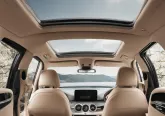
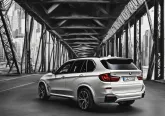
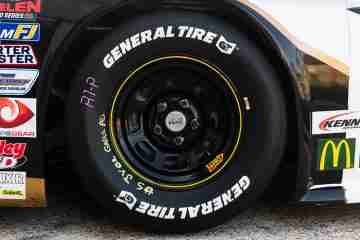

No Comment